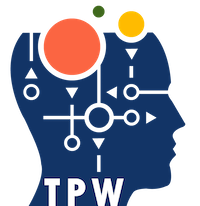In today's competitive business world, the efficiency and effectiveness of your sales team is paramount. Whether you're a startup finding your footing or an established business aiming to maintain dominance, ensuring you recruit and nurture the right sales talent is crucial. That's where the SP3D assessment comes into play.
Understanding the SP3D Assessment
SP3D, which stands for "Three Dimensional Sales Profile," is a scientifically designed tool that evaluates potential sales candidates across three dimensions:
- Ability: This measures the cognitive and emotional intelligence of the candidate. Can they think on their feet? Can they empathize with a client's needs?
- Personality: This gauges how well their temperament matches the demands of sales roles. Are they persistent? Can they handle rejection and still push forward?
- Values: This ensures alignment with your organization's ethos and culture. Will they be a good fit with your company's values and mission?
Incorporating SP3D in Your Workplace
- Recruitment Efficiency:
Before: Without SP3D, you might be relying heavily on lengthy interviews, intuition, and traditional recruitment processes which can be time-consuming and lack precision.
With SP3D: You can shortlist candidates based on objective data. For instance, if you're recruiting for a B2B software sales role, SP3D can help identify candidates who not only have the cognitive ability to understand complex software but also the personality traits to negotiate long sales cycles.
- Customized Training Programs:
Before: Training programs were often generic, covering standard sales techniques without considering individual strengths and weaknesses.
With SP3D: You can create tailored training modules. For example, if an employee's SP3D assessment indicates high cognitive ability but lower resilience, you might prioritize training them on handling rejection or managing stress.
- Team Building & Role Assignment:
Before: Sales team roles were often assigned based on seniority or intuition, leading to potential mismatches in team dynamics.
With SP3D: You can strategically build teams. Consider a scenario where a sales team needs to pitch to a new market segment. Using SP3D, you could select a mix of individuals—some with high adaptability scores to navigate the new segment and others with high relationship-building scores to foster long-term client relationships.
Real-World Application of SP3D
Imagine a tech startup, "TechBridges," launching a new product. They need a robust sales team to bring it to market. Here's how SP3D can assist:
- Recruitment: TechBridges uses SP3D to shortlist candidates, ensuring they possess the cognitive ability to grasp the technical aspects of the product and the personality traits to evangelize it to potential clients.
- Onboarding: Using the SP3D assessment, TechBridges identifies that a majority of their new recruits are highly motivated but might struggle with the technical intricacies of the product. They design an intensive technical training program to bridge this gap.
- Sales Strategy: Six months post-launch, TechBridges wants to enter a new geographic market. They use SP3D to identify team members with high adaptability
scores, ensuring they have the right people to navigate and adapt to the unique challenges of a new market.
The SP3D assessment is more than just a recruitment tool; it's a comprehensive solution that can guide multiple facets of sales strategy—from hiring to training to market expansion. For organizations looking to optimize their sales force and strategies, SP3D offers invaluable insights and a competitive edge in the market. Adopting and integrating it into your workplace practices can set the stage for unparalleled sales success.
